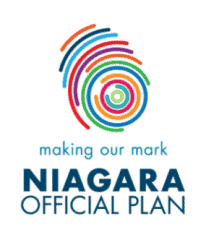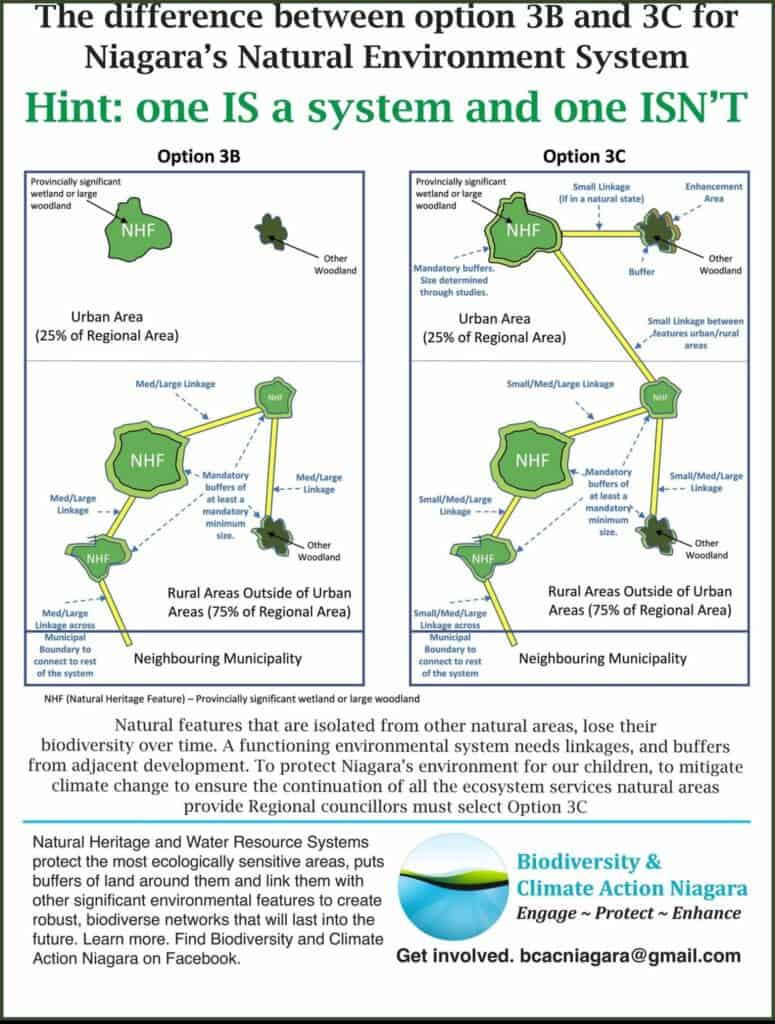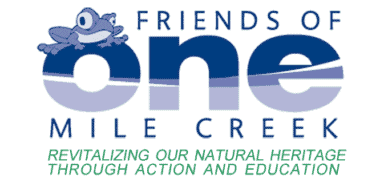Update: We are pleased to report that on Dec. 1, 2021, Niagara Region Council formally adopted a resolution for option 3C to be used in the new regional official plan which is expected to be finally approved in June 2022.
For the past several years, a detailed process has been underway by the regional government in Niagara to put in place a new Official Plan that will define how the Niagara Region will use available land over the next 30 years for physical, economic and social development.
There have been studies and public discussions under the broad headings of Growing Region (think residential development), Vibrant Region (think of design of new areas such as Glendale), Competitive Region (employment lands, agriculture and aggregate extraction), Connected Region (transportation and infrastructure) and Sustainable Region (the natural environment, watershed planning and climate change).

Given the focus of Friends of One Mile Creek on natural conservation, we’ve been cheering on the efforts of a group called Biodiversity and Climate Action Niagara (BCAN) led by Liz Benneian. FOMC is one of several local groups in the Niagara Region supporting BCAN.
The Province now requires that a Natural Environment System (NES) is included as part of the Official Plan. The NES includes a Natural Heritage Systems (NHS) and a Water Resource Systems (WRS). A NES comprises the most significant natural features like wetlands and woodlands, buffers to protect them from adjacent uses and linkages between them.
Unfortunately, the minimum requirements by the Province for the creation of the NES are not enough to protect our natural heritage now and into the future.
Region planning staff developed two options for the NES – 3B and 3C – but BCAN believes only 3C is robust enough to provide significant protection, especially given the development pressure in the Niagara Region.
“Regional Council will be asked to choose between a Natural Environment System that is good enough to meet the low bar set by the Province or one that is connected and robust enough to protect our local ecology into the future,” Liz Benneian says.

For instance, because many natural features cross between artificial municipal boundaries, the 3C option includes small linkages between significant features such as wetlands and woodlands outside of urban areas, as well as inside of them if the linkages are in a natural state. Also, 3C requires buffers along the edge of significant woodlands or wetlands in urban areas, with the size of the buffer determined after a developer pays for a proper study.
Here is a comparison of the options prepared by BCAN:
It’s fair to say that the debate between 3B and 3C has provided a sort of litmus test for which politicians seem to be serious about taking action to protect the natural environment, and those who seem to be more interested in catering to other interests. The region planning staff has not asked for direction from politicians on any aspect of the current plan except for the question between the options for the Natural Heritage System. Instead of making a decision on the NES options as staff requested, the Regional Council has asked staff to do further mapping and policy development for both 3B and 3C.
For Old Town in Niagara on the Lake, the Natural Environment System would cover 9.3% of the land area with option 3B while option 3C would cover 10.7%, according to the April 12 report to the region from consultants North-South Environmental Inc. and Meridian Planning Consultants (report provided below).
On the BCAN Facebook page (https://www.facebook.com/Biodiversity-and-Climate-Action-Committee-Niagara-114688909983836), Liz Benneian has put together a gallery of the images of politicians who should be thanked and supported for their efforts to support the natural environment because they have made the effort to study the options and voiced support for the 3C option. We’re pleased to note that Niagara on the Lake Lord Mayor Betty Disero is on the list of those supporting the 3C option.
Once again, we are disappointed to see the lack of support for environmental proposals by NOTL Regional Councillor Gary Zalepa.
The next step in the Niagara Official Plan process is for staff to come back to the full Regional Council, likely in September, following the June public information sessions.

To provide FOMC members with more background, we are posting the April 12 report to the region from consultants North-South Environmental Inc. and Meridian Planning Consultants about the natural environment options.

Leave a Reply